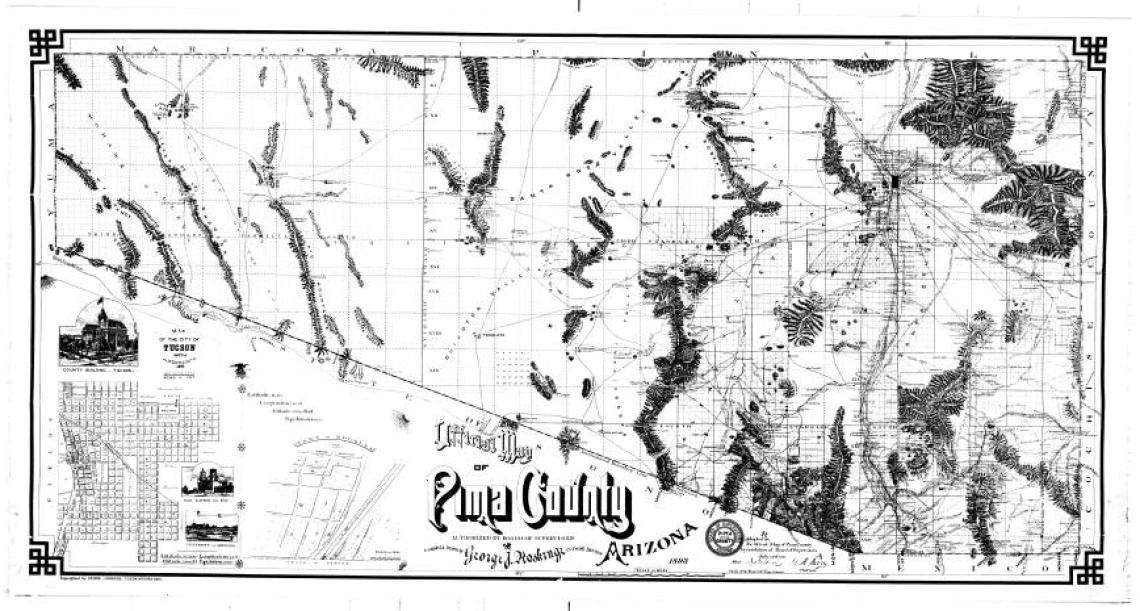Pima County, Arizona records

Collection area: Political Affairs Arizona and Southwest
Collection dates: 1864-1923 bulk (bulk 1867-1904)
Financial accounts, petitions, bonds, reports, leases, deeds, abstracts of titles, tax lists, bids, and correspondence related to Pima County operations. Chiefly records of the Board of Supervisors, such as letterpress copies of correspondence, petitions for appointments to county office, and financial demands and warrants. Other Board records include 1879 orders to incorporate the villages of Tombstone and Arivaca, and papers related to the construction of the first and second County courthouses. Assessor records consist of correspondence and a 1900-1907 block book.
School records include financial records, correspondence, and reports. Teachers' monthly reports indicate number of students enrolled; reports for Florence, 1873, and Tres Alamos, 1874-1875, give student names. School census reports, 1874-1904, list student names, race, whether native or foreign born, and parents' names. Records of other county offices are from the Justice Court, District Court, Coroner, County Hospital, Jailer, Sheriff, Treasurer, and Election Office. A Probate Court docket dates from 1883 to 1885, and an Arizona tax list is for 1879.
Some records relate to bonds for County services such as road overseers, constables, justices of the peace, butchers, physicians, and provisions for indigent sick and prisoners. Also present are records of the Calabasas, Tucson, and Northwestern Railroad Co., 1885-1886, 1892; also the Tucson and Gulf of California Railroad, 1882-1884.
Note: A more detailed inventory of boxes 17-19 and box 37 is available at the repository.
Pima County, located in southern Arizona, was formed in 1864 by an act of the First Legislative Session of the Territory of Arizona. The county seat is Tucson, Arizona.
A collection guide explains what's in a collection. New to using our collections? Learn how to use a collection guide.
Collection guideAccess this collection
Visit us in person to access materials from this collection. Our materials are one-of-a-kind and require special care, so they can’t be checked out or taken home.
How to cite
Learn how to cite and use materials from Special Collections in your research.
